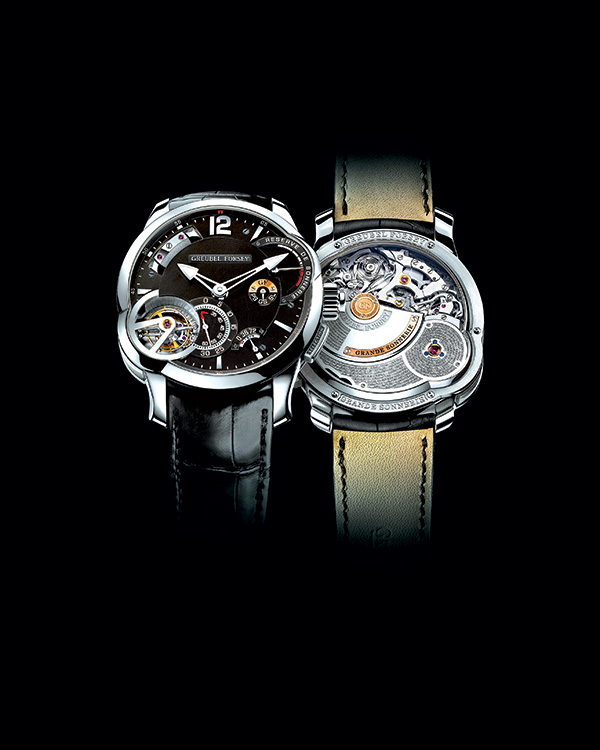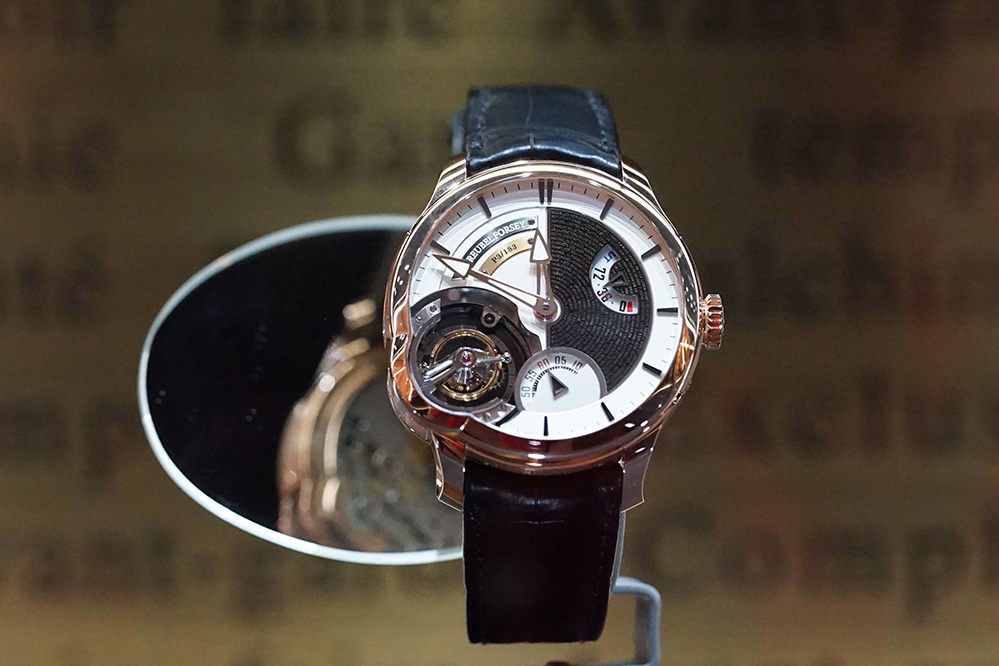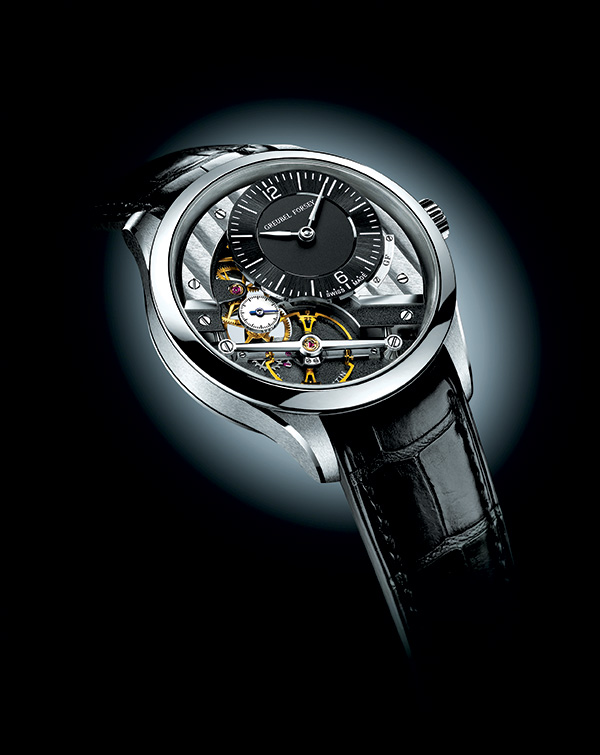
To call Greubel Forsey the modern master of the tourbillon might be a bit of an understatement. Stephen Forsey and Robert Greubel are much more than that. From the moment the duo started their namesake brand in 1999, they have been pushing the limits of fine watchmaking, relentlessly pursuing a level of watchmaking and design that surpasses expectations.
The Grande Sonnerie is one example. Very few watchmakers offer a Grande Sonnerie because of just how complex the mechanics are. We can expect nothing less from Greubel Forsey for their first chiming timepiece.
Post from RICOH THETA. – Spherical Image – RICOH THETA
The Grande Sonnerie has a Grande Sonnerie mode (which strikes the hours and the quarters in passing), a Petite Sonnerie mode (which strikes the full hours in passing), a silent mode (which doesn’t strike at all), a minute repeater, and of course, the Tourbillon 24 Secondes, all housed within the standard dimensions of a Greubel Forsey case, measuring 43.5mm in diameter and 16.13mm in height. While the movement is manually wound, the striking mechanism features a self-winding system with 20 hours of power reserve in Grande Sonnerie mode.
The watch took 11 years of research and development and is assembled of no fewer than 935 parts. Greubel Forsey has said only five to eight of the timepieces will be realised a year.

The Tourbillon 24 Secondes featured in the Grande Sonnerie, is of course, a tourbillon that is also realised in the Tourbillon 24 Secondes Vision, revealed with a salmon-coloured dial in 2015. In creating the timepiece, Robert Greubel and Stephen Forsey set themselves the challenge of housing the mechanism of the Tourbillon 24 Secondes without sacrificing the timepiece’s pure, elegant lines. The watchmakers succeeded in incorporating a sapphire crystal dome to the back of the timepiece, and the ingenious design won over the jury of the Grand Prix d’Horlogerie de Genève, earning the Aiguille d’Or award in 2015.
This year, the watch is available in three new versions: “Chocolate”, “Blue” and “Anthracite Black”. Each of the watches is cased in platinum, and comes with a corresponding leather strap.
There are three versions of the Tourbillon 24 Secondes to date: the Asymétrique, Contemporain and Vision models. Because the Vision was given such a prestigious award, Greubel Forsey decided to pay homage to the trio, and created the unique Tourbillon 24 Secondes Edition Historique.

This will be the second time the brand has unveiled an Edition Historique, following on from the Double Tourbillon 30° Edition Historique in 2010. The watch will also mark the last iteration of the Greubel Forsey 24-second tourbillon.
For the Tourbillon 24 Secondes Edition Historique, while the movement is similar to past versions, the dial is completely redesigned. The solid plate of gold is now covered in minute raised text that explains the Greubel Forsey philosophy in French.
The sectoral seconds and power reserve displays are also given a new, contemporary look. The timepiece comes in two versions: with a rose gold case or a platinum case, and is available in two Unique editions of 11 pieces.
When the Signature 1 was revealed at last year’s SIHH, it was immediately coined the watchmaker’s most low-end offering, as well as the most expensive time-only watch in the world. The watch, striking the right balance between simplicity and extreme sophistication, has the makings of a true horological classic, sharing a similar story with fellow watchmaker Dufour and the Simplicity timepiece — a time-only take from some of the greatest masters of high complications today. Last year, the watch was announced in white and rose gold, and stainless steel, and this year, we see the platinum version. Together, there are 33 limited editions of the gold versions (11 each in white gold, rose gold and platinum) and 33 editions in stainless steel.

Here’s what makes the Signature 1 so special. It is the first watch to be produced under the new Greubel Forsey Signature Series, an initiative to showcase the designs and ideas of Greubel Forsey’s brilliant group of watchmakers. The watches in this series will draw on the watchmaker’s imagination, along with Greubel Forsey’s philosophy, to create unique limited edition timepieces. This watchmaker will co-sign the timepieces with Stephen Forsey and Robert Greubel.
The Signature 1, the first in the series, is the creation of longtime team member Didier J.G. Cretin, who decided to create the first manual wound watch with three hands and no tourbillon function in the history of Greubel Forsey. The watch might sound simple on the outset—as do most of Greubel Forsey’s creations—but don’t be fooled. The watch, which took the watchmakers six years to develop, features an exclusive balance wheel system, in-house spring, hand-finished hands and an all-gold dial.





